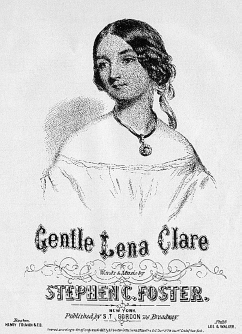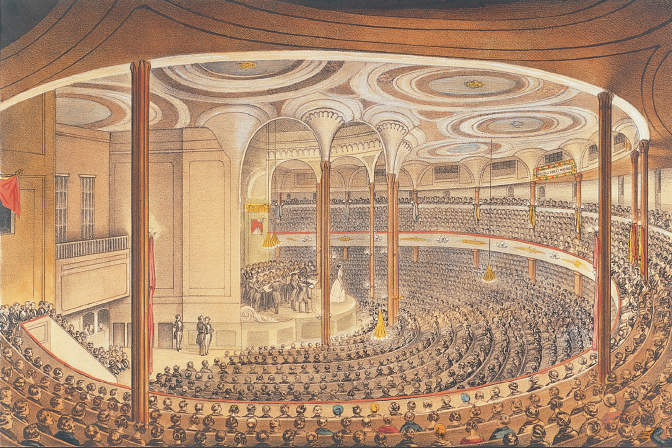Music in the Vernacular

We might well count the psalms and hymns mentioned above as vernacular music, for in colonial days everybody who could carry a tune sang them at church and in the home, and later they were widely sung at revival meetings and the like. Nineteenth-
Foster led a dispiriting life. Even in those days, songwriting was closely tied to the music business; Foster was dependent on Christie’s Minstrels, the leading traveling theater troupe of the time. They had exclusive rights to his songs and helped popularize them — so much so that some of them soon achieved the status of folk songs. But Foster could never seem to make ends meet. His marriage broke up. He turned to drink and died at the age of thirty-
John Philip Sousa, son of Spanish and German immigrant parents, was a Marine Corps bandmaster who later formed a wildly successful touring band of his own. All Americans know his masterpiece The Stars and Stripes Forever (even if they don’t all know its name). Leonard Bernstein once said that his greatest regret as a musician was that he hadn’t composed that march.
